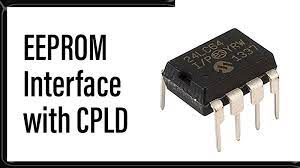Introduction: In the realm of computer memory, there exists a fascinating technology known as EEPROM (Electrically Erasable Programmable Read-Only Memory). EEPROM represents a significant advancement in non-volatile memory, offering both flexibility and reliability. In this article, we delve into the intricacies of EEPROM, exploring its inner workings, applications, and the advantages it brings to various industries.
Understanding Electrically Erasable Programmable Read-Only Memory:
Electrically Erasable Programmable Read-Only Memory is a type of non-volatile memory that can store data even when power is removed. It belongs to the family of ROM (Read-Only Memory) but distinguishes itself with its ability to be electrically modified, making it programmable and erasable. Unlike its cousin, the traditional ROM, Electrically Erasable Programmable Read-Only Memory allows for data rewriting, providing a more dynamic and adaptable memory solution.
How Does Electrically Erasable Programmable Read-Only Memory Work?
Electrically Erasable Programmable Read-Only Memory employs a floating-gate transistor structure, which enables the storage of electrical charges in a specialized region within the memory cell. These charges represent the binary data (0s and 1s) and can be read, modified, or erased through electrical signals. The process involves carefully controlled voltage levels and programming algorithms, ensuring data integrity and long-term reliability.
Applications of Electrically Erasable Programmable Read-Only Memory:

- Consumer Electronics: Electrically Erasable Programmable Read-Only Memory plays a crucial role in devices such as smartphones, tablets, and digital cameras. It stores important user data, settings, and firmware updates, allowing for easy customization and system maintenance.
- Automotive Industry: In modern vehicles, Electrically Erasable Programmable Read-Only Memory is extensively utilized in electronic control units (ECUs) and onboard computers. It stores vital information like engine parameters, vehicle identification numbers (VIN), and calibration data, facilitating efficient diagnostics and software updates.
- Industrial Automation: Electrically Erasable Programmable Read-Only Memory finds application in industrial control systems, where it stores configuration data, user settings, and operational parameters. This enables seamless reconfiguration and adjustment of equipment, enhancing productivity and adaptability in manufacturing environments.
- Smartcards and RFID Tags: Electrically Erasable Programmable Read-Only Memory is a key component in smartcards and RFID tags, used for secure data storage, authentication, and access control. These applications include credit cards, identification cards, passports, and contactless payment systems.
- Advantages of Electrically Erasable Programmable Read-Only Memory:
- Non-Volatility: The ability to retain data without a continuous power supply makes Electrically Erasable Programmable Read-Only Memory ideal for storing critical information that must survive power outages or device shutdowns.
- Rewritability: Unlike traditional ROM, Electrically Erasable Programmable Read-Only Memory allows for data modification and updates, offering flexibility and adaptability in various scenarios.
- High Endurance: Electrically Erasable Programmable Read-Only Memory technology provides a high number of erase/write cycles, ensuring data integrity and longevity, even in applications with frequent data updates.
- Compact Size: Electrically Erasable Programmable Read-Only Memory cells are relatively small, enabling higher memory densities and more efficient integration into electronic systems.
- Future Developments: As technology continues to advance, Electrically Erasable Programmable Read-Only Memory is evolving alongside it. Newer versions with increased storage capacities, faster programming speeds, and improved power efficiency are being developed. Additionally, research into alternative non-volatile memory technologies, such as flash memory and emerging resistive memories, continues to push the boundaries of data storage and retrieval.

Electrically Erasable Programmable Read-Only Memory stands as a testament to the innovative progress made in non-volatile memory. Its ability to store data reliably and be electrically modified has made it a vital component in various industries, including consumer electronics, automotive, and industrial automation. As we move forward, the continued advancements in Electrically Erasable Programmable Read-Only Memory technology will undoubtedly shape the landscape of non-volatile memory, providing us with more robust, flexible, and efficient data storage solutions.
In conclusion, EEPROM emerges as a remarkable technology in the field of non-volatile memory, offering a range of benefits and applications across industries. Its unique ability to retain data without a continuous power supply, coupled with its rewritability and high endurance, positions Electrically Erasable Programmable Read-Only Memory as a versatile and reliable memory solution.
Electrically Erasable Programmable Read-Only Memory finds its place in consumer electronics, automotive systems, industrial automation, and smartcards, enabling data storage, customization, and system maintenance. Its non-volatile nature ensures that critical information remains intact, even during power outages or device shutdowns. The capacity for data modification and updates grants flexibility and adaptability in rapidly evolving environments.
With its compact size and increasing storage capacities, Electrically Erasable Programmable Read-Only Memory enables higher memory densities and efficient integration into electronic systems. Moreover, ongoing research and development efforts aim to enhance Electrically Erasable Programmable Read-Only Memory’s programming speeds, power efficiency, and overall performance, paving the way for future advancements.
As we look ahead, the evolution of Electrically Erasable Programmable Read-Only Memory technology will continue to shape the landscape of non-volatile memory. The quest for higher capacities, faster speeds, and more efficient operations will lead to further innovations in data storage and retrieval. Ultimately, Electrically Erasable Programmable Read-Only Memory’s continued progress will contribute to the advancement of various industries, empowering them with reliable and adaptable memory solutions for the challenges of tomorrow.